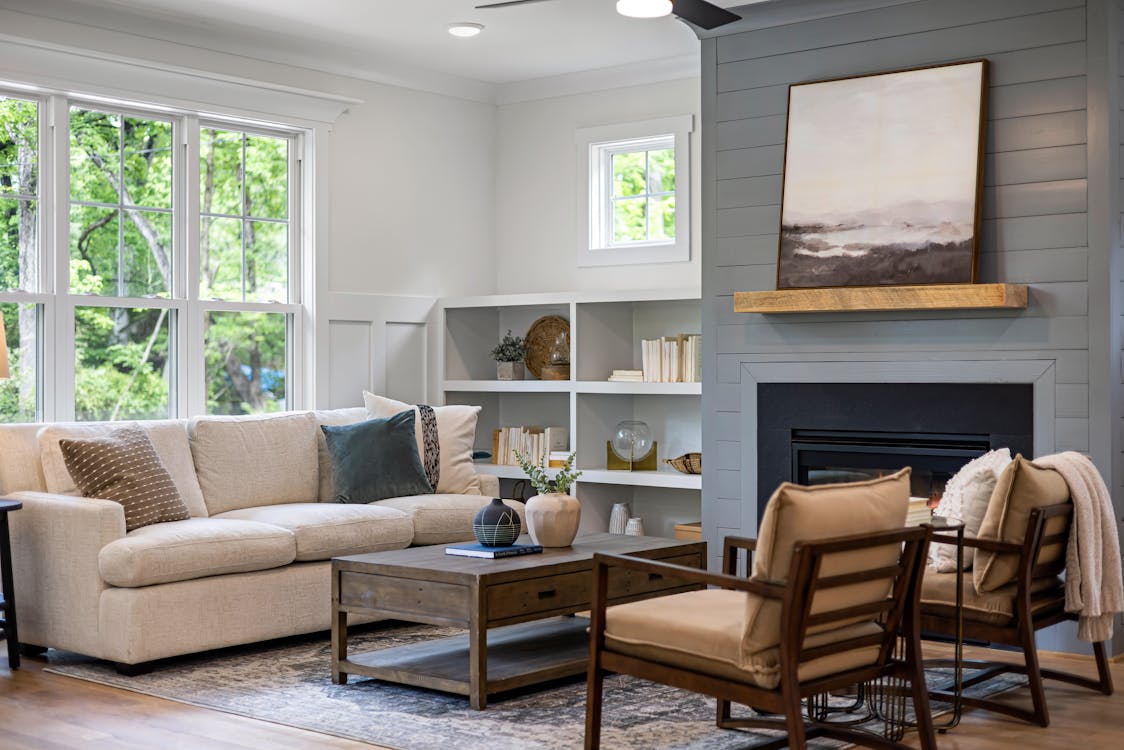Landlord Blog
Education and news for smart DIY landlords!
The Psychology of Home Staging: Why It Matters More Than You Think

When selling a home, first impressions matter more than most sellers realize. It's not just about square footage or location—it's about how a potential buyer feels the moment they step through the door. This is where home staging comes in, a process that uses psychological principles to showcase a house in the best possible light. Staging isn’t merely about decorating; it’s about crafting an emotional experience that connects with buyers, helping them envision their life in the space. Here’s why home staging is more important than you might think.
First Impressions Count
In real estate, first impressions are formed within seconds, and these initial feelings often dictate the trajectory of a buyer's interest. According to psychological research, humans are wired to form judgments quickly. This phenomenon, known as "thin-slicing," occurs when we make snap evaluations based on limited information. For potential home buyers, this means that the condition, layout, and presentation of the property within the first few moments can influence their final decision.
A well-staged home maximizes positive first impressions by creating an inviting and aesthetically pleasing environment. By focusing on the entryway, lighting, and furniture arrangement, stagers can evoke a sense of warmth and welcome, helping buyers feel at home immediately. The goal is to craft a neutral yet appealing canvas that allows buyers to picture themselves living there.
Discover: How to Create Stunning Listing Photos to Attract Potential Buyers
Tapping into Emotion
Buying a home is not just a financial transaction; it's a deeply emotional decision. Buyers don’t just assess properties with logic—they often rely on how a home makes them feel. This is where the psychology of home staging becomes crucial. Staging helps evoke positive emotions by creating a visual narrative that tells the story of a lifestyle. This emotional connection helps buyers feel that the home could be "the one" for them.
For example, a cozy reading nook by a window or a well-set dining table can stir feelings of relaxation or envisioning family dinners, evoking a sense of belonging and comfort. Stagers strategically use decor, color schemes, and furniture to elicit these emotions, subtly guiding potential buyers toward envisioning a future in the home.
The Power of Space and Flow
A significant part of home staging revolves around the psychological principle of space and flow. Buyers want to feel that the home is spacious, even if it is smaller in size. Clever staging can make a room appear larger by decluttering, arranging furniture to maximize movement, and ensuring that each room has a clear purpose. Visual distractions are minimized so that buyers focus on the room’s potential, not its flaws or limitations.
Moreover, the way people flow through a home influences their perception of space. A staged home ensures there is a natural, logical flow from room to room. This subtle guidance helps buyers mentally map the home, making it easier for them to visualize how they would use the space and move through it in their daily lives.
Read more: Why Some Homeowners Love Open Floor Plans
Neutralizing the Space
One of the most critical aspects of home staging is depersonalization. When a home is personalized with the seller’s unique style, it can be difficult for buyers to imagine themselves living there. Family photos, bold color choices, or overly specific decor can alienate some buyers, as it reinforces the idea that the house belongs to someone else.
Staging neutralizes these elements by creating a more universally appealing environment. Neutral colors, simple decor, and tasteful furniture create a blank canvas that allows buyers to project their own personalities and lifestyles onto the space. This psychological shift from “someone else’s home” to “my potential home” is pivotal in the decision-making process.
The ROI of Staging
While staging may seem like an unnecessary expense to some sellers, it can actually result in a significant return on investment. According to real estate studies, staged homes often sell faster and at higher prices compared to non-staged homes. This is because buyers are more likely to place higher offers on homes that they emotionally connect with and can visualize themselves living in.
Discover: Virtual Staging vs. Real Staging: Which is Right for You?
Conclusion
Home staging taps into the psychology of buying, addressing both emotional and cognitive factors that influence a buyer's decision. It maximizes first impressions, evokes positive emotions, and creates a neutral, spacious environment that buyers can see themselves in. By understanding these psychological principles, sellers can increase the desirability of their property, ultimately leading to a quicker and more profitable sale. In today’s competitive real estate market, staging isn’t just an optional extra—it’s an essential tool that can make all the difference.
